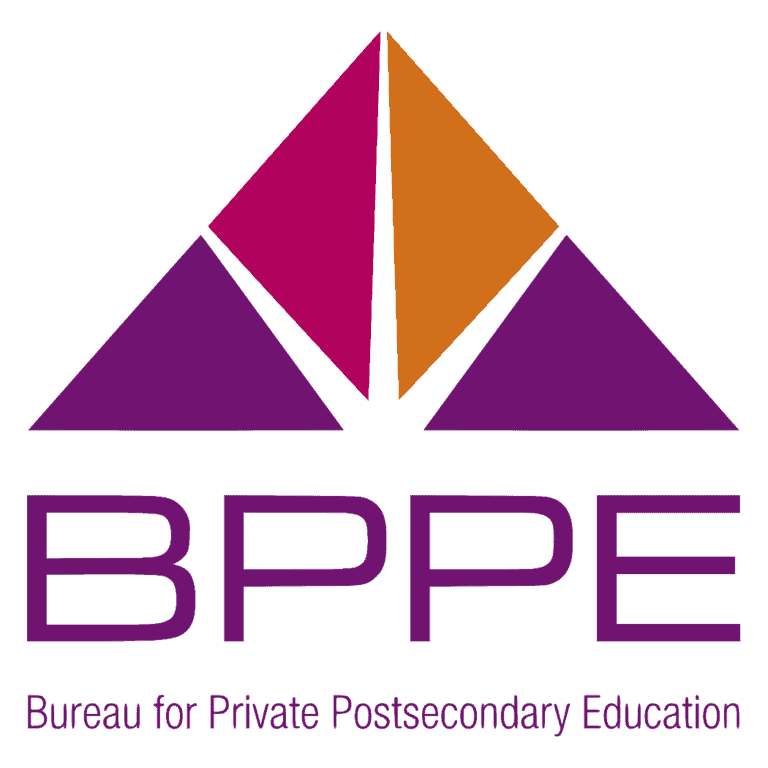Get the Skills to Become a Full-Stack Developer

30-Week* Full Stack Development Immersive (FSDI) Coding Bootcamp
Full-stack developers are versatile professionals with expertise in both front-end (user interface) and back-end (server, database, and application logic) development. They have the skills to work across all web application layers, allowing them to build complete, functional products from start to finish.
The Full Stack Development Immersive (FSDI) certificate program is a 30-week* bootcamp that prepares students for entry-level full-stack web developer roles. With rolling start dates every five weeks, it offers online and hybrid formats for easy communication with instructors and peers. There are no required textbooks or course material costs for students.
Next Start Date: Jan 5thFull Stack Development Immersive (FSDI) San Diego Global Knowledge University - San Diego Campus 1095 K Street, Suite B San Diego California USA 92101 Learn the basics of front and back-end coding for website and app development. You will be trained in the top coding languages used by the best full stack developers in the technology sector.https://sdgku.edu/wp-content/uploads/2014/11/AdobeStock_498919631.jpegSan Diego Global Knowledge University
The best way to see if San Diego Global Knowledge University is the right fit for you is to book an Admissions Appointment. You’ll meet with an Admissions Representative who will give detailed program and schedule information. Book an Admissions Appointment or Get more info.
Becoming a Skilled Full Stack Developer
The FSDI program equips you with vital skills for a software and web development career. As a full-stack web developer, you’ll receive training in web applications, covering user interface, front-end, middle-tier, and back-end. The curriculum includes key programming languages like HTML, CSS, JavaScript, Node.js, React, ASP.NET, and Python, along with tools such as GitHub, Agile, and Scrum.
Through real-world projects, you will develop everything from simple websites to complex applications with external data integrations. At the end of the program, you will have a professional portfolio showcasing your skills and experience in a simulated tech environment.
Is a Full Stack Development Bootcamp Right For You? Find Out! Take the SDGKU “Career Training Readiness Quiz”
This fun, online quiz takes 3 minutes to complete and you'll get a personalized report. Identify your strengths and social style plus the training and positions you're best suited for. Get Your Career Training Readiness Score Now >>
Approved for Veterans
San Diego Global Knowledge University proudly supports our heroes in pursuing their personal and professional goals. The U.S. Department of Veterans Affairs has approved the Full Stack Developer program, allowing veterans to use their Chapter 33 Post-9/11 G.I. Bill® benefits, as well as other educational benefits—including Chapters 30-32, 35, 1606, and the Veterans Rapid Retraining Assistance Program (VRRAP)—to assist with tuition and fees.
Federal Financial Aid
If you qualify for funding, you may be entitled to government grants (free money) and loans, available at the best rates possible.
This full stack program was exactly what I needed to take me into a world that I knew existed, but was foreign to me, and which I know I will enjoy greatly. The skills that I learned will help me to expand my horizons for many years to come. Thank you, San Diego Global Knowledge University!
Career Opportunities
Graduates of the Full Stack Development Immersive acquire the basic skills necessary to strongly compete for an entry-level position as a full stack developer in companies from varying industries. Most graduates work at tech companies, freelance for multiple clients, or start their own businesses. The program also provides career training and counseling to help students improve their resumes, explore job opportunities, and stand out in the job market.
100% Online and Hybrid Options Available
Our program is designed to fit the needs of busy, adult learners, so you can choose between our 100% online or hybrid learning option. Many of our students are raising families and some continue to work while going to school. We will help you choose a schedule that works for you.
Academic Support
This full-stack coding bootcamp is designed for dedicated students who understand that learning to code is challenging and requires commitment and expert guidance. Our instructors—many doctoral-level professionals—bring extensive experience and a deep understanding of the learning process.
The bootcamp provides the highest quality support to students so that they can maximize their learning capacity and career preparation as a full stack developer.
- Define the concept of “Full Stack” in web development and the basic principles and rules of web design.
- Describe some of the most used digital languages in industry, their strengths, and applications.
- Explain data structure and system design techniques for solving problems in different environments and contexts.
- Apply project management methodologies and skills of web development projects in a variety of organizational environments.
Students enrolled in this non-degree program must achieve a minimum cumulative grade point average (CGPA) of 2.0 to graduate. Applicants for this non-degree program must submit the following documents:
1. The corresponding SDGKU online Application for Admission and supporting documents; and
2. Official transcripts of record from a high school recognized by the United States Department of Education or equivalent, including established foreign high schools, if the institution offering the program documents that its minimum required courses of study, units and content rigor are the same as those of a high school from an institution approved by the United States Department of Education.
30 weeks* or 24 semester credit hours.
Details
- This program is offered in both online and hybrid options.
- There is no difference in cost between the two options and there are no additional associated costs for taking the hybrid option.
- The curriculum for both options is the same in terms of academic requirements.
- The hybrid option is offered to students who would prefer to attend in-residence sessions periodically.
- Non-local students are responsible for their own travel expenses and lodging.
- There are NO textbook costs for this program (Estimated, purchased by students from publishers or re-sellers)
Modalities
Online students study and attend class remotely for 100% of their curriculum, while hybrid students are required to both study online and attend in-residence sessions offered at the SDGKU campus.
Scheduling
In-residence sessions are scheduled prior to start date of a program or course.
Enrollment
If you are interested in enrolling in a hybrid program, please reach out to our admissions representatives for questions on in-residence session scheduled dates and times.

Lead Faculty: Samantha Jimenez, Ph.D.
Dr. Samantha Jimenez serves as lead faculty for the FSDI program. She has over 10 years experience teaching computer software engineering, programming, and computer science and has participated in leadership roles for various software development projects and professional conferences in the software industry and academia. When she’s not working as a full stack instructor, she is an avid volleyball player and participates in competitive tournaments throughout the year.
Full Stack Development Course Descriptions
This course is designed to cover the fundamentals of the HTML programming language and CSS creation of rules that specify how the content of an element should appear. Students will develop skills like creating the basic structure of a website, text, lists and images. They will create their first HTML5 website with each of the elements presented in the course. Students will gain a basic understanding of the functions and inner-workings of CSS, how to write CSS rules, and how to apply CSS rules to HTML pages.
(1 credit hour)
This course presents an intermediate-level HTML programming language and CSS creation of rules that specify how the content of an element should appear. Students will develop skills like creating the more advanced structures of a website, such as images, tables as well as audio and video integration. They will create an HTML5 website with each of the elements presented in this and the previous course. Students will gain a thorough understanding of the functions and inner-workings of CSS, how to write CSS rules, and how to apply CSS rules to HTML pages.
(1 credit hour)
This course teaches students how to program in Scratch, an easy to use visual programming language. In particular, the course will introduce students to the fundamental principles of computing and will help them think like software engineers. Since programming is fundamentally about figuring out how to solve a series of problems and writing relating algorithms, a clear set of steps to solve any problem will be presented in this course. Students will learn how to develop an algorithm, progress to reading code, then understand how programming concepts relate to algorithms.
(1 credit hour)
This course presents the key concepts in computer programming using JavaScript. Students will learn the basic principles of how computers create models of the world by using data and how JavaScript is utilized to change the contents of an HTML page. Students will gain an understanding of the basics of JavaScript and how the Document Object Model (DOM) allows access to change a document’s contents while it is loaded into the browser. Students will also explore how events are used to trigger code.
(1 credit hour)
This course presents the principles of jQuery and how it can make the process of writing scripts faster and easier. Students will learn how to take a series of common tasks that require many lines of JavaScript code to accomplish and wrap them into methods that can be called with a single line of code. In addition, students will be introduced to Ajax and Application Programming Interfaces (APIs), including new APIs that are part of HTML5 and those of sites like Google Maps.
(1 credit hour)
This course is designed for students to utilize fundamental JavaScript and jQuery knowledge to create a project that can demonstrate their basic knowledge of each. Students will continue to practice writing code and learning more advanced topics of JavaScript and jQuery, given their importance for web developers because jQuery is the most widely deployed JavaScript library, with 3 to 4 times more usage than any other JavaScript library on the web.
(1 credit hour)
This course explores JavaScript based front-end application development using React.js. Students will use JavaScript ES6 to develop a React application. They will be introduced to various aspects of specific React components, or smaller pieces of code, which allow for more complex user interface (UI) designs and the creation of reusable UI components. In addition, students will learn about React router and its role in developing single-page applications.
(1 credit hour)
This course presents the basic principles of Python, a general-purpose coding language that can be used for other types of programming and software development besides web development, in contrast to HTML, CSS and JavaScript. This includes back-end development, data science, and writing scripts among other things. Students will build a Python application utilizing lists, if statements, if else statements, dictionaries, classes and functions. A particular focus will be given to testing and debugging a Python application for quality control purposes.
(1 credit hour)
This course focuses on designing controlled forms. Students will be introduced to Flux architecture as a design pattern and Redux as a predictable state container for JavaScript apps or an application data-flow architecture. The course explores various aspects of Redux and its use to develop React-Redux powered applications. Students will then learn how to perform asynchronous calls to communicate with a REST API.
(1 credit hour)
This course provides an overview of Web API implementation with ASP.net and Python Flask, open-source web application frameworks designed for web development to produce dynamic web pages. This is a unique course focused on creating a backend API connected to NoSQL database (MongoDB) as way to persist JSON object. This backend will be used by an online store build with React as the front-end framework. Students will be focused on creating the back-end business and data logic, as well as exposing the functionality as a RESTful API, the latest standard for API development.
(1 credit hour)
This course is designed to teach students how to leverage the Flask micro web framework using Python programming language to build and run software applications of various types. Throughout this course students will learn how to create micro-services, write and employ templates to create graphical frontends for their web applications, connect applications to databases to allow users to create, read, update and delete persistent records, leverage web forms to obtain user input and more. The course presents some classical examples for analysis and development by the student, such as building a restful backend that interacts with a database to store user data, a blog type website and a basic e-commerce or online store type application.
(1 credit hour)
This course takes an expanded look at Python as a programming language building on the student’s introductory Python knowledge, particularly focusing on Django, a high-level Python web framework that encourages rapid development and clean, pragmatic design. Students will be exposed to the peer development process of a web-based application, including its testing and deployment using Django.
(1 credit hour)
This course is designed to introduce students to more complex problems surrounding the development and deployment of a Django application. The user will gain intimate knowledge on how to build a more robust, secure and scalable application using the Django framework. Students will experience why Django is the most popular Python framework for web development and a key tool for web developers seeking to use a framework that includes all the necessary features by default instead of offering them as separate libraries.
(1 credit hour)
This course covers the essential information that every serious programmer needs to know about algorithms and data structures, with emphasis on applications and scientific performance analysis of Python implementations. It covers elementary data structures, sorting, and searching algorithms. Using a combination of data structures and algorithms, students will learn how to apply them to drastically improve the performance of a program by designing efficient data structures which are key to designing efficient algorithms.
(1 credit hour)
This course is focused on helping students build a complete design project from start to finish while applying the principals and guidelines of UX design, such as user testing and wire frames. Students will learn how responsive design is used to build and end product that will provide a good user experience across as many devices as possible. Their project will have Responsive Web Design (RWD) functionality that reflects dynamic changes to the appearance of a website depending on the screen size and orientation of the device being used to view it, as well as page elements that reshuffle as the viewpoint grows or shifts.
(1 credit hour)
This course presents several aspects of the software development life cycle (SDLC), an iterative and multi-step process that provides a systemic approach for building and delivering software applications. Students will be exposed to methodologies like Agile, Scrum and test-driven development. Students will learn how to use certain methodologies, which project managers employ for the design, planning, implementation and achievement of their overall project objectives. Students will be required to engage in a collaborative effort of forming self-organizing and cross-functional teams, as well as defining the end user.
(1 credit hour)
This course presents some of the fundamentals of software architecture and design patterns within an Agile environment. Students will write code based on various design patterns and will select the most appropriate architecture that is adaptable and applicable to their project. Students will review various tasks associated with Software Project Management, such as cost and effort estimation, an essential consideration for all freelancers and junior web developers.
(2 credit hours)
This course is designed to integrate several concepts and tools discussed in previous courses. Students will begin working on the basic programing tasks for their final Capstone project. In particular, focusing on designing, building and testing user experience (UX) aspects of the project. A special focus will be made on branding, usability and function as key drivers that enhance the experience that people have while interacting with a product while making sure they find value in what is being provided.
(2 credit hours)
This course will take students through the process defining a development approach and general architecture for the final Capstone project. Students will continue to develop their project using an Agile methodology. Students will implement the principles of adaptive planning leading to flexible responses to change while also employing architectural styles and design patterns that allow the incorporation of any change in the development process.
(2 credit hours)
This course concludes the Capstone series and Full Stack Development Immersive program. Students are required to finalize their Capstone projects, by implementing various programming principles presented in the program and by demonstrating their own ability to manage the development process and financial feasibility of their respective projects. Students will be launching their projects as live websites or applications that can be used to demonstrate the competencies they acquired in the program at a minimum, and if possible, as fully functioning tools that provide value to society. Students are required to present their final projects to their peers and submit a written report to the instructor, simulating a real-life project rollout scenario to future employers.
(2 credit hours)
Is a Career as a Full Stack Developer Right for You? Get More Info…
If you’re interested in learning more about careers in Full Stack Development and exploring whether San Diego Global Knowledge University is right for you, fill out the form on this page to receive more information.
For immediate questions, call (619) 934-0797.
Frequently Asked Questions
*Program length when completed in normal time.



